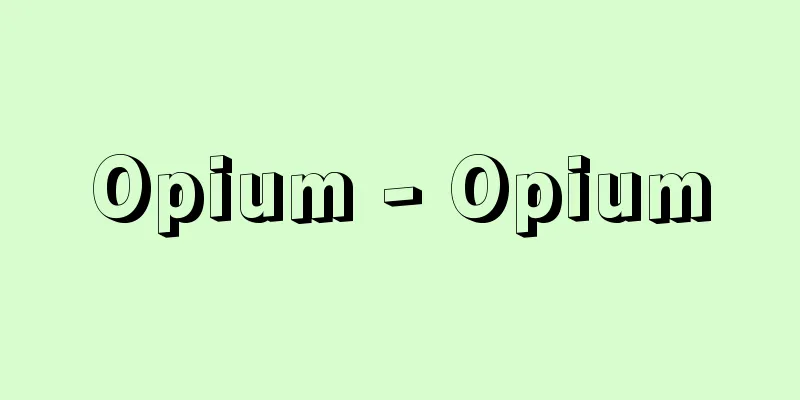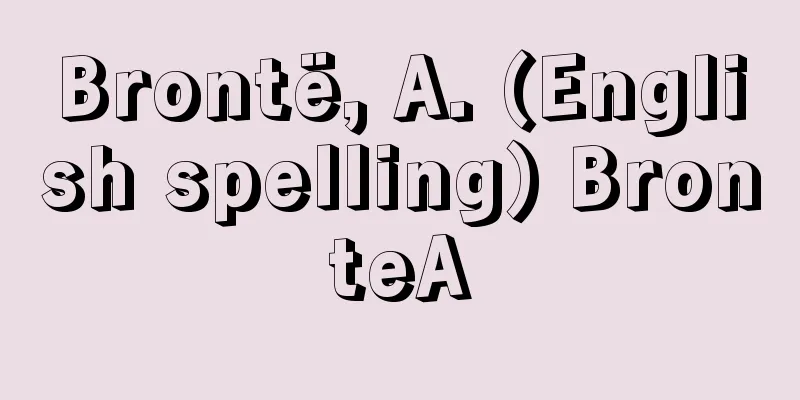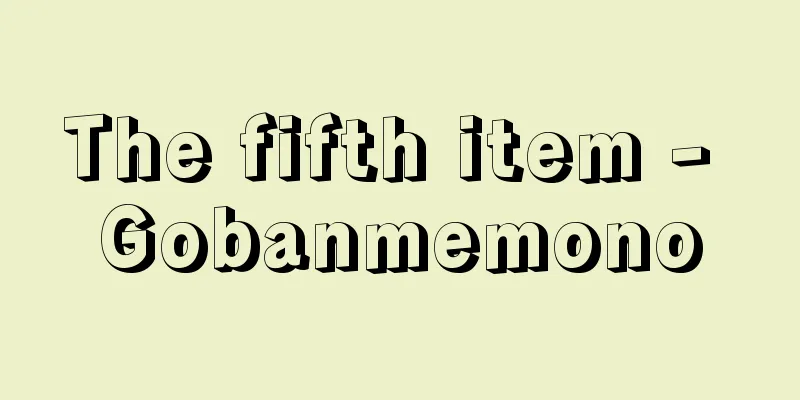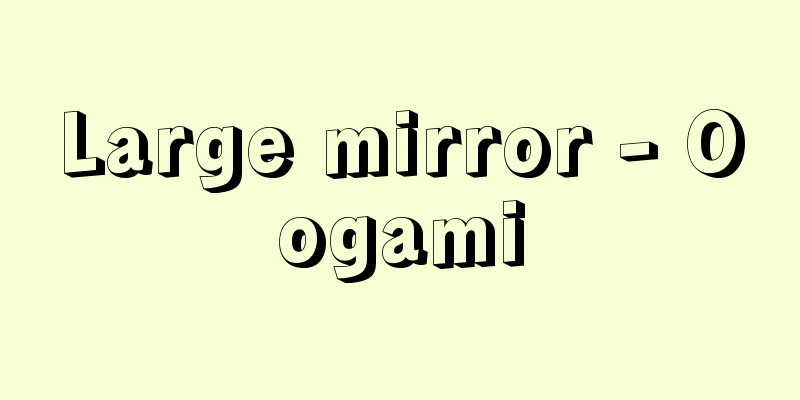Particle - Joshi
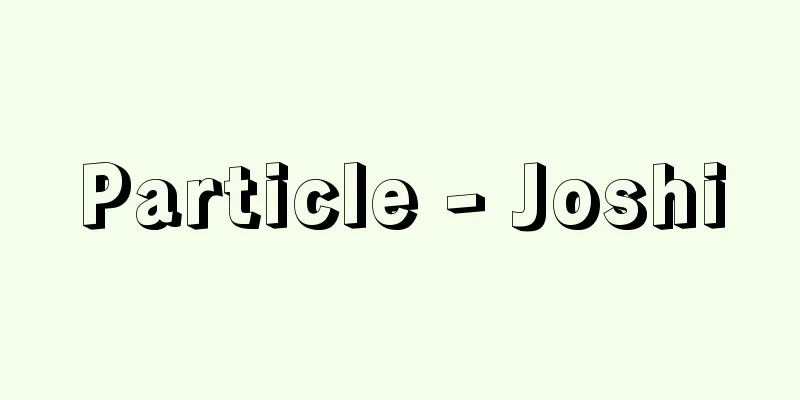
|
A part of speech in Japanese. A particle that does not conjugate and is never used alone. It has no substantial concept in itself, but indicates the linguistic subject's relationship to the objective thing or situation indicated by the superordinate clitic phrase, or the linguistic subject's relationship to the listener. Along with auxiliary verbs, which are conjugated particles, they characterize Japanese as an agglutinative language. The functions of particles include those that recognize the relationship between materials, those that indicate the evaluation of the materials, those that relate to the strength of a statement, those that determine the nature of the sentence, and those that establish a relationship with the listener, but classification criteria differ depending on the theory, and even words with the same name can belong to different categories. Otsuki Fumihiko divides them into three types according to the type of word they are attached to, while Yamada Yoshio classifies them as follows according to their function and the relationship they indicate: (1) Case particles - These are attached to nouns or adverbs to indicate the status they hold as constituent parts of a phrase, such as ga, no, o, ni, he, to, yori, kara, de, etc. (2) Adverbial particles - These are attached to words related to the meaning of a verb, modifying the meaning of the verb far below, such as bakari, made, nado, yara, ka, dake, kurai, etc. (3) Linking particles - These are attached to words related to a verb that makes a statement, and exert influence on that statement, such as wa, mo, koso, sae, demo, hokan, shika, etc. (4) Final particles - These relate to predicates, and are always used only at the end of a sentence. "Ka, e, na (prohibition, command), yo, i, ro, tomo, ze, sa," etc. (5) Interjections: These are used to add emphasis to a word or to heighten emotion, and can be placed more freely than other particles. "Yo, ya, zo, ne, gana," etc. (6) Conjunctions: These are attached to predicative words to connect them to the next phrase. There are six types: "Ba, shi, to, ga, tokoroga, ni, noni, mono, kara, mo, tomo, kedoke," etc. He also explained that there are rules for the order in which these particles overlap with each other. Hashimoto Shinkichi classified them according to whether they cut off or continue, and what words they are attached to. In addition to Yamada's six types, he created 10 categories: (1) parallel particles - those that are attached to various words and follow the word below on an equal footing: "to, ya, yara, ni, ka, nari, dano." (2) quasi-subject particles - those that give the word they are attached to the qualification of a noun: "no (I want something cheap ), zo (where (I hid it)), kara (that's why ), hodo." (3) semi-adverbial particle (also called connective particle): those that give the word they are attached to the qualification of an adverb: "no (snow on the pine trees)." (4) semi-adverbial particle: those that give the word they are attached to the qualification of an adverb: "to, nagara, mama, kiri, gotera, gurumi, goto ( with the skin), tomo ( all three)." He also gave a detailed explanation of the order of precedence when particles overlap with each other. Motoki Tokieda divided them into four categories based on the meaning, from the viewpoint of understanding the speaker's position: case particles, limiting particles, connecting particles, and impression particles. In school grammar, they are classified as case particles, adverbial particles (combining a connecting particle and an adverbial particle), connecting particles, and impression particles (combining a final particle and an interjection particle). Historically, it seems that many particles have been derived from other parts of speech such as interjections, demonstratives, and nouns, but their origins are ancient. The recognition of particles has existed since the Nara period, but later, when reading classical Chinese texts in Japanese, auxiliary verbs, conjugation endings, and suffixes, which are also grammatical structures unique to Japanese, were indicated with wo-ko-to marks, and all of these were called teni-ni-wo-ha and teni-ni-ha. Later, in the study of waka poetry, teni-ni-wo-ha, which includes interjections and some adverbs, was given importance, and research into this was conducted relatively early, but it was not until Yamada Takao that the name "particle" was established without any impurities. Incidentally, particles are translated into English as "particles," but in English grammar, particle means "particle," and includes articles, prepositions, conjunctions, adverbs, interjections, etc., and is a different concept from Japanese particles. Particles do not correspond only to a single part of speech in Western languages, but their functions correspond to the roles of case declension, prepositions, parts of conjunctions and adverbs, word prefixes, etc. in Western languages. [Reiko Aoki] "Yamada Takao, 'An Introduction to Japanese Grammar' (1936, Hobunkan)" ▽ "Hashimoto Shinkichi, 'Study of Particles and Auxiliary Verbs' (1969, Iwanami Shoten) " ▽ "National Institute for Japanese Language and Linguistics (ed.), 'Particles and Auxiliary Verbs in Modern Japanese - Usage and Examples' (1951, Shuei Publishing)" ▽ "Ishigaki Kenji, 'Historical Study of Particles' (1955, Iwanami Shoten)" ▽ "Kojima Masatoshi, 'Study of Japanese Particles - A Sketch of the History of Particles' (1966, Ohfusha)" ▽ "Matsumura Akira (ed.), 'Detailed Explanation of Particles and Auxiliary Verbs in Classical and Modern Language' (1969, Gakutosha)" ▽ "Suzuki Kazuhiko and Hayashi Kyoju (eds.), 'Japanese Grammar Course by Part of Speech 9: Particles' (1973, Meiji Shoin)" Source: Shogakukan Encyclopedia Nipponica About Encyclopedia Nipponica Information | Legend |
|
日本語の品詞の一つ。辞のうち、活用がなく、単独で用いられることのないもの。それ自身は実質的観念をもたず、上接語句の指し示す客体的な事物・事態に対する言語主体のかかわり方や、聞き手に対する言語主体のかかわり方などを示す。活用をもつ辞である助動詞とともに、膠着(こうちゃく)語としての日本語の特色をなしている。助詞の働きには、素材間の関係の認定に関するもの、素材に対する評価限定を示すもの、陳述の強さに関するもの、文の性質を決定するもの、聞き手との関係を結ぶものなどがあるが、学説によって分類基準が異なり、また名称が同じでも所属語に異同がある。 大槻文彦(おおつきふみひこ)は、付く語の種類によって1類、2類、3類に分かち、山田孝雄(よしお)は職能とその示す関係とによって次のように分類した。(1)格助詞――体言または副詞に付いて、それらが句の構成要素としてどんな資格にたつかを示すもの。「が・の・を・に・へ・と・より・から・で」など。(2)副助詞――用言の意義に関係をもつ語に付いて、はるか下にある用言の意義を修飾するもの。「ばかり・まで・など・やら・か・だけ・ぐらい」など。(3)係助詞――陳述をなす用言に関係をもつ語に付いて、その陳述に勢力を及ぼすもの。「は・も・こそ・さえ・でも・ほか・しか」など。(4)終助詞――述語に関するもので、つねに文の終止にだけ用いられるもの。「か・え・な(禁制・命令)・よ・い・ろ・とも・ぜ・さ」など。(5)間投助詞――語勢を添えたり、感動を高めたりするのに用いられ、他の助詞に比してその位置が自由なもの。「よ・や・ぞ・ね・がな」など。(6)接続助詞――述格の語に付いてこれを次の句と接続させるもの。「ば・し・と・が・ところが・に・のに・ものを・から・も・とも・けれども」など、の6類である。また、これらの助詞が相互に重なる場合、その順序に規則のあることも説いた。 橋本進吉は、切れるか続くか、またどんな語に付くかによって分類し、山田の6類のほかに、(1)並立助詞――種々の語に付き、対等の関係で下の語に続くもの。「と・や・やら・に・か・なり・だの」。(2)準体助詞――付く語に体言の資格を与えるもの。「の(安いのがほしい)・ぞ(何処(どこ)ぞへ隠した)・から(そういうからには)・ほど」。(3)準副体助詞(連体助詞ともいう)――付く語に副体詞の資格を与えるもの。「の(松の雪)」。(4)準副助詞――付く語に副詞の資格を与えるもの。「と・ながら・まま・きり・がてら・ぐるみ・ごと(皮ごと)・とも(三つとも)」の4類をたてて10分類とし、助詞が相互に重なるときの順位をも詳しく示した。 時枝誠記(もとき)は、話し手の立場を理解するうえから、意味によって分かち、格を表す助詞、限定を表す助詞、接続を表す助詞、感動を表す助詞の四つとした。学校文法では格助詞、副助詞(係助詞と副助詞をあわせる)、接続助詞、感動助詞(終助詞と間投助詞をあわせる)とする。 歴史的にみると、助詞は、感動詞、指示語、体言など他の品詞から転じたものが多いと思われるが、その成立は古い。助詞の類に対する認識は奈良時代からすでにあるが、その後、漢文訓読に際して、助詞のほか、同じく日本語特有の文法構造である助動詞、活用語尾、接尾語などもヲコト点によって示され、これらすべてがテニヲハ、テニハと称された。のち、歌学においては、感動詞や一部の副詞の類までも含んでのテニヲハが重視され、その研究は比較的早くから行われていたが、不純物を含まず、しかも助詞の名称が定着するのは山田孝雄以後のことである。 なお、助詞はparticleと英訳されるが、英文法でのparticleとは「不変化詞」という意味で、冠詞、前置詞、接続詞、副詞、間投詞などを含み、日本語の助詞とは、概念が異なっている。助詞は西欧語の一品詞にのみ該当するものではなく、その働きは西欧語の格変化、前置詞、接続詞や副詞の一部、語序などの役割に対応する。 [青木伶子] 『山田孝雄著『日本文法学概論』(1936・宝文館)』▽『橋本進吉著『助詞・助動詞の研究』(1969・岩波書店)』▽『国立国語研究所編『現代語の助詞・助動詞――用法と実例』(1951・秀英出版)』▽『石垣謙二著『助詞の歴史的研究』(1955・岩波書店)』▽『此島正年著『国語助詞の研究――助詞史の素描』(1966・桜楓社)』▽『松村明編『古典語現代語助詞助動詞詳説』(1969・学燈社)』▽『鈴木一彦・林巨樹編『品詞別日本文法講座9 助詞』(1973・明治書院)』 出典 小学館 日本大百科全書(ニッポニカ)日本大百科全書(ニッポニカ)について 情報 | 凡例 |
Recommend
Toowoomba (English spelling)
A city located 137km west of Brisbane in southeast...
Corona discharge - Corona discharge
A type of gas discharge. It is a partial discharg...
Kitayama Juhachikendo
<br /> This welfare facility in Kawakami-cho...
Foreign exchange broker - Gaikoku kawase burouka
…In Japan, interbank foreign exchange transaction...
Toyokawa Irrigation Canal
This is a multi-purpose canal that irrigates the ...
Yi-ki - Iki
〘Noun〙 Ritual vessels always offered at the ancest...
Bohr, AN (English spelling) BohrAN
…He was awarded the Nobel Prize in Physics in 192...
Rheum nobile (English spelling)
… [Hiroshi Wakamatsu]. … *Some of the terminology...
Gao Fan Long (English spelling)
1562‐1626 A Chinese thinker from the late Ming Dyn...
Sayyid Ahmad Khan
1817‐97 An Indian Muslim social reformer. Born int...
Different current - Iryu
…In various Buddhist sects, this refers to a view...
Fushan
A Chinese calligrapher, painter and poet from the...
Club moss - Hikage no kazura (English spelling)
An evergreen fern of the Lycopodaceae family. Its...
Holy people - Shoju
〘Noun〙 A Buddhist term. A multitude of bodhisattva...
Carex rochebrunii (English name) Carex rochebrunii
…[Tetsuo Koyama]. … *Some of the terminology that...
